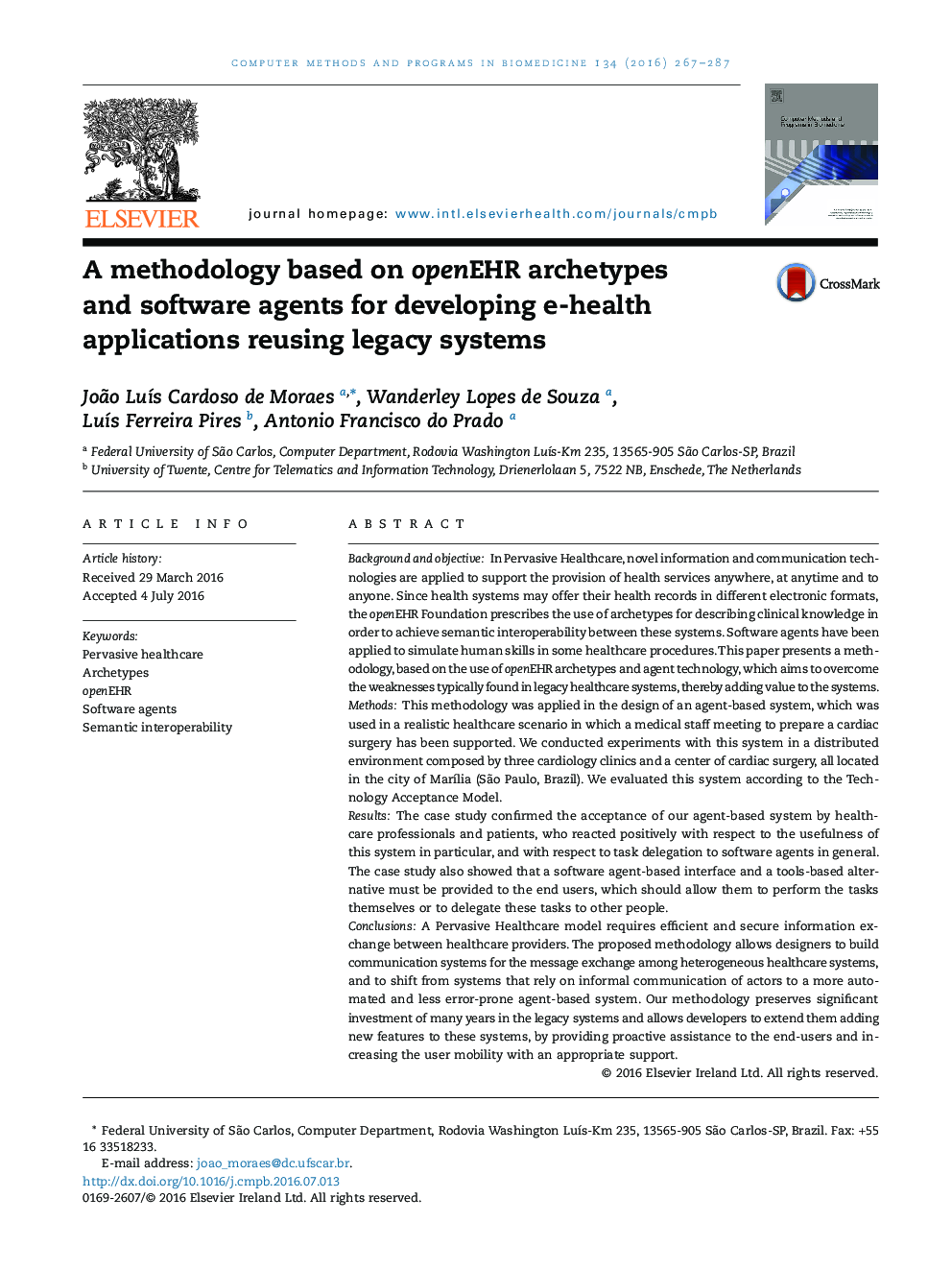| Article ID | Journal | Published Year | Pages | File Type |
|---|---|---|---|---|
| 466291 | Computer Methods and Programs in Biomedicine | 2016 | 21 Pages |
•ICT advances have enabled patient-centric Pervasive Healthcare.•Legacy HISs require extensions with semantics capabilities for interoperability.•Agent-based systems show high acceptance by stakeholders in daily tasks support.•Our methodology preserves investment in legacy HISs by adding interoperability.
Background and objectiveIn Pervasive Healthcare, novel information and communication technologies are applied to support the provision of health services anywhere, at anytime and to anyone. Since health systems may offer their health records in different electronic formats, the openEHR Foundation prescribes the use of archetypes for describing clinical knowledge in order to achieve semantic interoperability between these systems. Software agents have been applied to simulate human skills in some healthcare procedures. This paper presents a methodology, based on the use of openEHR archetypes and agent technology, which aims to overcome the weaknesses typically found in legacy healthcare systems, thereby adding value to the systems.MethodsThis methodology was applied in the design of an agent-based system, which was used in a realistic healthcare scenario in which a medical staff meeting to prepare a cardiac surgery has been supported. We conducted experiments with this system in a distributed environment composed by three cardiology clinics and a center of cardiac surgery, all located in the city of Marília (São Paulo, Brazil). We evaluated this system according to the Technology Acceptance Model.ResultsThe case study confirmed the acceptance of our agent-based system by healthcare professionals and patients, who reacted positively with respect to the usefulness of this system in particular, and with respect to task delegation to software agents in general. The case study also showed that a software agent-based interface and a tools-based alternative must be provided to the end users, which should allow them to perform the tasks themselves or to delegate these tasks to other people.ConclusionsA Pervasive Healthcare model requires efficient and secure information exchange between healthcare providers. The proposed methodology allows designers to build communication systems for the message exchange among heterogeneous healthcare systems, and to shift from systems that rely on informal communication of actors to a more automated and less error-prone agent-based system. Our methodology preserves significant investment of many years in the legacy systems and allows developers to extend them adding new features to these systems, by providing proactive assistance to the end-users and increasing the user mobility with an appropriate support.
